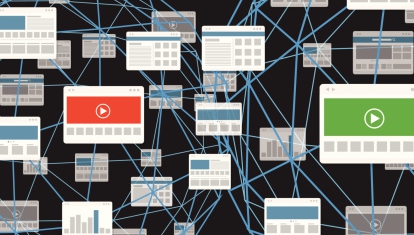sales-marketing-alignment
Your Guide to Sales Content Reporting Best Practices: Part 2
So you want to know whether your sales content is working? You’re definitely not alone. According to a study by the Content Marketing Institute, here are the five most prevalent content challenges among B2B sales and marketing teams:
- Producing engaging content (60 percent)
- Measuring content effectiveness (57 percent)
- Producing content consistently (57 percent)
- Measuring ROI (52 percent)
- Lack of budget (35 percent)
All of these challenges are interconnected. After all, it’s hard to produce engaging content if you don’t know what makes it engaging or effective. And without an easy way to measure and prove ROI, it’s going to be tough to get the budget you need to fully embrace the power of sales content.
Okay, here’s one more stat that’s worth noting… According to Forrester, the average customer engages with 11.4 pieces of content before they make a purchase. Your prospects are definitely consuming the content your sales reps and marketers put out there. The question is whether that content is helping or harming.
That leads us to sales content reporting. In Part 1 we walked through some foundational principles. In Part 2, we're digging into the best practices for starting sales reporting and making it useful on an ongoing basis.
Sales Content Reporting Best Practices
Best Practice #1: Start with Benchmarking
It can be tempting when you first start looking at content reports to try to immediately fix what’s broken and highlight what’s working.
Freeze for a hot minute.
The best thing you can do at the start of any content reporting effort is capture benchmarking data. Figure out what content you have to work with and save reports showing what’s being used, how it’s being used, and how effective it is. This is your framework for showing improvement. A year from now, you’ll be able to reference those numbers and show conclusively that your sales content strategy is improving (and that’s what this is all about, right?).
Best Practice #2: Track Time Efficiency
Content effectiveness/ROI is usually the golden child of sales reporting, but there’s another aspect that’s worth tracking too: content efficiency.
We’re referring to the time it takes to create, customize, and/or find sales content. These time wasters are a huge problem for B2B sales teams. After all, any time sales reps are not selling is potential revenue lost. By tracking and reporting on how efficient (or more likely, inefficient) these processes are, you can assess the value of implementing tools to improve that aspect of sales content.
Best Practice #3: Map Content to the Buyer’s Journey
I’m going to sound like a broken record, but this is something worth repeating: any and all of this data has to be put into context. The most effective sales content is created with a specific buyer persona and sales stage in mind (if that’s not the case for your sales content, you should seriously consider making some changes). So if a piece of content is being used in the wrong context, the report may show dismal numbers. This is a good thing – sort of. It’s showing a problem that needs to be fixed.
But don’t assume that because a video is getting very few views or a presentation isn’t being opened at all that you should scrap it altogether. It could be that the video is designed for very early on in the sales process, but it’s being sent to buyers who are ready to close. Or perhaps the case study your reps are sending over is for a completely different industry or need than the prospect they’re communicating with.
In short, consider poor performing metrics as a red flag, not a nuclear bomb. Research them and figure out the context of the situation.
Best Practice #4: Know Which Content Types are Winners
To take the idea of the buyer’s journey and persona to the next level, keep an eye on which content types or formats are most effective for each sales stage and persona. You may find that a certain type of buyer responds incredibly well to videos, while others prefer more technical documents.
Best Practice #5: Do Something with Your Reports!
Don’t make the all-too-common mistake of falling into the habit of glancing through your weekly report and then simply moving on to the next email. The wealth of information contained in these reports will do nobody any good if they’re left untouched.
Instead, make sure your reports are set up to make next steps clear and then develop a process for how to address noteworthy metrics.
If a video is crushing it for a certain buyer persona, what’s the process for making sure reps know to use it in that situation? If a valuable sales presentation hasn’t been sent out by reps in a month, what’s the next step to increase adoption? If buyers never make it past page two of an eBook, is there a method to revising that piece of content and ensuring reps only use the latest version?
There’s a lot to consider when it comes to sales content, but the good news is that you don’t have to have it all figured out right at the start. Incremental improvements over time is the key to sales enablement success.
Have questions about setting up sales content reporting or big data analytics? We’re one phone call away.








